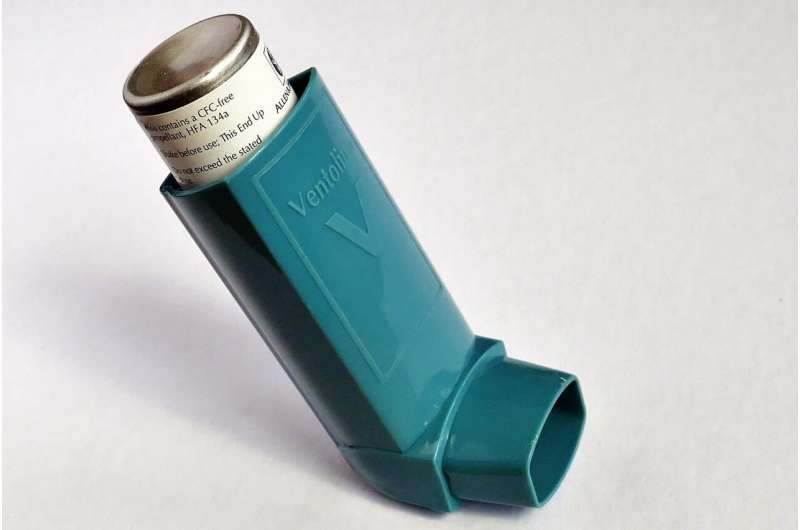This article has been reviewed according to Science X's editorial process and policies. Editors have highlighted the following attributes while ensuring the content's credibility:
fact-checked
trusted source
proofread
Higher prevalence of asthma linked to unhealthy living conditions in Dublin South Inner City community

New research has found that residents of Oliver Bond House flats in Dublin's south inner city are 2.4 times as likely to have asthma in their medical records, compared to other patients attending the same general practice living locally.
The School of Medicine's published analysis of respiratory health in a Dublin South Inner City General Practice shows that "even adjusting for whether a patient had a medical card or not, Oliver Bond House residents were still 1.9 times as likely to have evidence for asthma in their medical records than other patients in the same practice."
According to Catherine Hayes, Professor in Public Health at Trinity and report author, "The purpose of this report is to describe the distribution of health problems and services in local communities. The report does not prove that the housing conditions reported by residents at Oliver Bond House are causing asthma."
"The two reports do show that these residents have more recorded asthma than others living locally, and that they report housing conditions that other studies have shown to cause respiratory ill health."
The report was a case study within a SMART D8 project aiming to increase collaboration across local health services and communities in using health data to plan health service and public health interventions. SMART D8 is an initiative to improve the health and well-being of citizens in Dublin 8 through collaboration and innovation.
Darach O'Ciardha, GP & Assistant Professor in Primary Care, Dept of Public Health and Primary Care, Trinity said, "Smart D8 funded us to work with communities to frame questions and to try to answer them with local data. In this case general practice data was the most useful. We used methods developed from the HSE funded Tomorrow's Care project. These methods allow for description of aspects of a practice population or a community's health utilizing general practice data in a novel way."
The "Respiratory Health Among Residents of Oliver Bond House" report follows on from an earlier report on physical conditions in the complex—"Environmental Conditions in Oliver Bond House"—published by Robert Emmet CDP in 2021 which highlighted the inadequacy of the physical buildings themselves.
Some 82.8% of residents report issues with mold and damp in their homes, over one in three residents (35%) also report sewage problems, over 30% have water coming into their homes, exacerbating the mold and damp and over 55% of residents have been told by a medical practitioner that damp, mold or sewage is contributing to ill-health in their families.
"We are literally sick waiting, physically and mentally," said Gayle Cullen, Chairperson of the Oliver Bond Residents' Group. "People are living with considerable damp and mold. Most of the windows are ill-fitting, old and drafty. It's impossible to keep the flats warm which puts an extra cost on residents along with the health burden."
"Older people and children particularly are really vulnerable to the effects of the cold, damp and mold spores. The Trinity School of Medicine report is great as it supports what we have been saying for years- these flats are having a negative impact on our health. It is hard to believe that levels of asthma are twice as high for people living in Oliver Bond House as they are for people elsewhere and it's hard to believe that this sort of data was not available or acted on before now."
Plans for regeneration were announced for the complex and a regeneration forum was established in October 2021 to provide oversight for the project to deliver required physical improvements. However there has apparently been little progress on the project to date and a 15–20 year timeline on the project being completed.
Oliver Bond House is one of the oldest and largest flat complexes in Dublin City. Situated between the River Liffey and the Liberties in the southwest inner city, it was built in 1936 and designed by renowned city architect Herbert Simms Oliver Bond. The residents say that while Oliver Bond is now an estate in serious decline, the community is strong, determined and committed to ensuring that it is improved and regenerated as a matter of urgency.




















